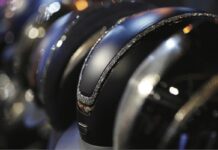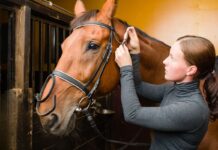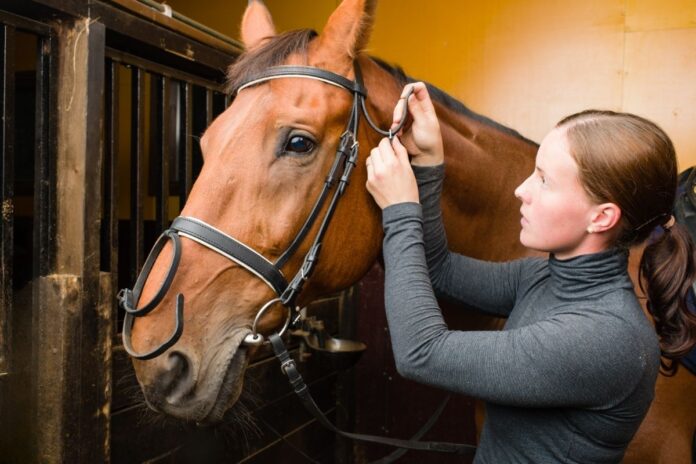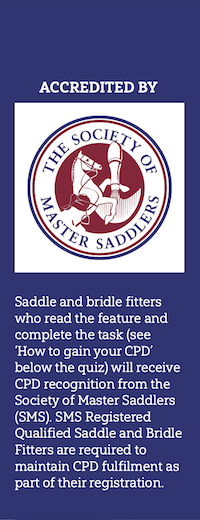
Nosebands: how tight is too tight?
There is a lot of talk about tight nosebands in the equestrian media these days, and rightly so with the current threat to our social licence. We’ve all seen images of horses with compressed flesh under over-tight nosebands, but do we understand what is too tight and why we use a particular noseband?
Frances Roche MVO, SMS Qualified Bridle Fitter and Master Bridle Maker, looks at the impact of over-tight nosebands and how to ensure the horse’s comfort and welfare.
It is crucial that nosebands are fitted properly. They should allow for jaw movement and never cause pinching or rubbing. A noseband that is too tight can lead to stress, discomfort, and even behavioural issues.
The Society of Master Saddlers (SMS) has historically recommended fitting nosebands with a clearance of two fingers or by using an ISES taper gauge under the front of all nosebands, but do we know why? Probably because this is what we have been taught down the generations via Pony Club and other recognised training organisations. So should we now be considering if there is any proof that this is correct?
There has been a considerable amount of research into different types of noseband and bridles in recent years, and it is known that different styles can have an effect on the gait or biomechanics of the horse. You can read more about this research at this link
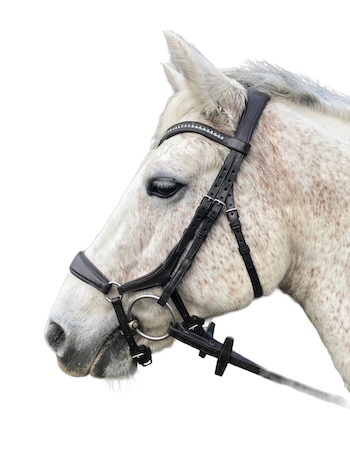
Modern drop nosebands of a more articulated design allow for a better, more flexible and comfortable fit.
https://www.sciencedirect.com/science/article/abs/pii/S0737080615005535
Some of you will have seen the recently published paper from Centaur Biomechanics which looked at pressures under a cavesson noseband at various levels of tightness.
In simple terms, the research shows that with a cavesson noseband adjusted from 0.0 to 2.0 finger tightness, horses willingly accepted high noseband pressures when chewing a treat. The study also found that the pressures under cavesson nosebands is higher under the mandible than on the nasal bone. For further information on this study, follow this link.
https://beva.onlinelibrary.wiley.com/doi/full/10.1111/evj.14451?fbclid=IwZXh0bgNhZW0CMTAAAR05rTWu_RFYJvuafeu_3_wLkll7NeoxsQynmTEPTCi501NHO2KUQsRMVsk_aem_F9RUOLBUsc7EBmd6IbBKGA
It is important to note that when you see over-tight nosebands with the flesh bulging over the straps, these are tightened to considerably less than 0.0 fingers, and that is why the flesh is compressed.
You should also be aware that the difference in pressures found during the study between 2.0 fingers and 1.5 fingers equates to approximately the weight of a small battery. Think about when you fasten your jeans or your belt, you are usually compressing your flesh to a degree - and yet you are happy to wear them all day, whereas most horses only wear their bridle for around an hour a day.
Fitting nosebands
As bridle fitters, how can we take these latest findings on board and make sure we are doing the best for the horses we see and pass on this information to our clients? Clearly, we should aim for a minimum of 1.5 fingers’ tightness as a general guide, but it’s also important to consider the design and type of noseband.

Show bridles are quite plain in appearance and the noseband isn’t usually padded, which is fine if the noseband isn’t tight.
Nosebands which fasten below the bit cross the lower mandible, which is narrow and bony, therefore it’s vital that the part of the straps are padded to minimise pressure in these areas.
Crank/Swedish style nosebands are usually padded all around the noseband with a separate pad under the mandible. This chin pad must always fully cover the mandible, be softly padded and centrally located.
Some nosebands have been designed with a deeper, very soft pad under the front of the noseband, lifting the main band of leather away from the sides of the nasal bone where there are known peak pressures. Arguably, these could be fitted a little snug, as the pad takes up some of the ‘finger’ space while still enabling jaw movement due to the soft compressibility of the deep padding.

Equally, the high ring Grakle noseband may need to be a little more snugly than some to prevent them gaping or twisting, but they must be padded under the mandible and on the nasal bone area to enhance comfort.
Modern drop nosebands are of a more articulated design with four rings instead of two, which allows for a better, more flexible and comfortable fit.
Should we consider not using a noseband?
There is no problem with not using a noseband if the horse is happy and safe to ride without one. But there are times when it might be better to use one.
Studies have shown that, during fast work such as racing, eventing and jumping, a bridle used without a noseband becomes unstable, allowing the bit to move excessively in the mouth and the cheekpieces to move around near the eyes.
Some horses, and particularly ponies, may have small ears or be very cresty. This can cause the bridle to slide off over the head.
Some horses may have melanomas, commonly around the throat area, which means they cannot have a throatlash or a browband. In these cases, a noseband can prevent the bridle from coming off. A low set throatlash can also be employed for horses and ponies with this type of conformation or condition.
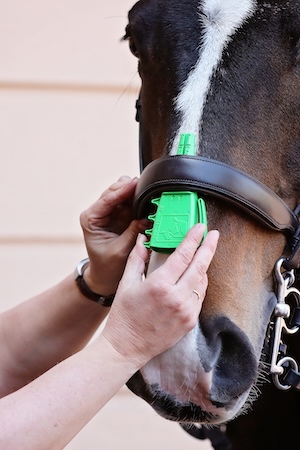
Is bitless a better option?
It may be a great option for some, but as with anything else, it won’t work for all. Bitless riding requires careful introduction and a high level of schooling. Many bitless bridles rely on tight or tightening styles of noseband, or a high degree of leverage on a noseband. So, it’s not necessarily a kinder option, and if the horse isn’t carefully schooled, bitless may be a less safe option.
There are many styles and designs of anatomical bridles and nosebands available these days and it can be quite a minefield for horse owners to navigate. Encourage your customers to check out claims made by companies about their products, look for the science to back up claims and not to buy something just because it worked for a friend or because someone on Facebook recommended it. All horses are different and have different preferences.
New rules on noseband tightness
The FEI introduced a new rule from 1 May 2025 that at competitions, all nosebands must not exceed 1.5cm tightness, measured under the front of the noseband. They have developed a new tool to measure this.
Some equestrians think this is too tight, but it’s important not to have a knee jerk reaction and presume to know how horses feel about the difference between 1.5 and 2.0 fingers’ tightness.
This is a great step forward, as previously noseband tightness for competitions was measured at the side of the noseband where, due to the soft flesh next to the interdental space beneath, even a very tight noseband would pass the test. Now the measurement is taken on the front and therefore significantly looser than before.
We should all continue to follow the science and keep studying the effects of bridles on horses, there is always more to learn.
While nosebands are a useful tool, the emphasis should be on the horse’s welfare and comfort. Always consider the individual needs of each horse.



